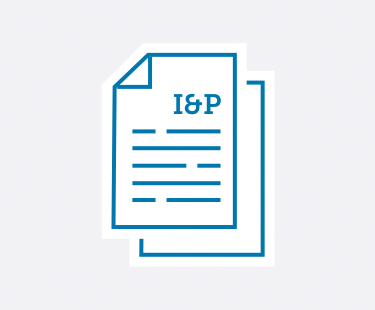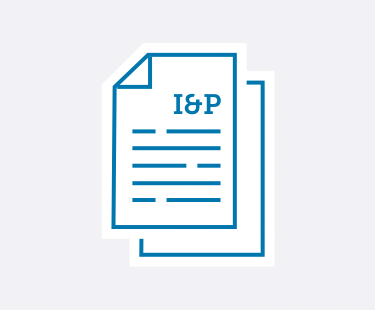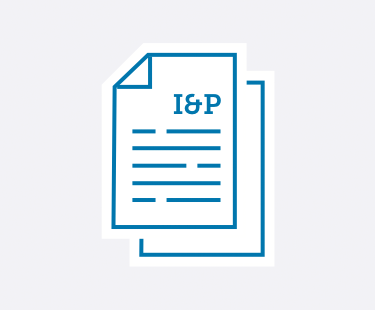

Learn practical strategies to handle emerging trends and leadership challenges in private schools.
No matter if you’re a School Head, Admission Director, Development Director, Board member, or any other private school administrator—Ideas & Perspectives®, ISM’s premier private school publication, has strategic solutions for the pervasive problems you face.
- Tuition not keeping pace with your expenses? In I&P, explore how to use strategic financial planning to create your budget and appropriately adjust your tuition.
- Enrollment dropping off? Discover how to implement the right admission and enrollment management strategies that engage your community—and fill your classrooms.
- Trouble retaining teachers? Learn how you can best support your teachers using ISM’s Comprehensive Faculty Development framework. Your faculty members will become more enthusiastic about their roles—which ultimately improves student outcomes.
- Fundraising campaigns not as successful as you’d hoped? Implement ISM’s practical advice and guidance to build a thriving annual fund, construct an effective capital campaign, and secure major donors—no matter your community size or location.
- Not sure how to provide professional development—for you and your staff? Learn ways to develop and fund a successful professional development strategy. You can improve teacher-centered satisfaction and growth, which in turn strengthens student-centered learning.
- Problematic schedule? You can master the challenges of scheduling with the help of ISM’s practical advice, based on our experience with hundreds of schools and our time-tested theories.
- And so much more.
I&P has shared targeted research, up-to-date insight, and sound theory with school leaders since 1975. More than 8,500 private school decision-makers find the answers to their schools’ administrative and governance matters in our advisory letter. We give you the strategic answers you need.
As an ISM Silver or Gold member, you not only receive issues online and in print 10 times a year, but you have access to 900+ articles in our web archive. Need help? It’s at your fingertips! Learn more and sign up for ISM's membership here.
Search
See the articles from our latest issue of Ideas & Perspectives.
New-Trustee Orientation
Volume 43 No. 5 // April 16, 2018
Your annual orientation session for the new Trustee should be grounded in your governance-level mission statement. ISM has for decades suggested that Boards of Trustees create a governance-level mission statement—a mission statement for the Board itself, not to be confused with the institutional mission statement. Such a governance-level statement, ISM has suggested, should read approximately as follows.
1. Already a member? Click here to login.
2. Not a member? Click here to become a member.
3. Not sure? We'll help you figure it out.
How to Recognize and Handle Personally Identifiable Student Information
Volume 43 No. 5 // April 16, 2018
The debate about personal “protected data” continues, in large part due to the explosion in the availability and sharing of electronic data. Much has been written about this issue, and laws have been passed to mitigate the problem. Private schools must be vigilant. Our focus in this article is on what and how schools access and handle student information.
1. Already a member? Click here to login.
2. Not a member? Click here to become a member.
3. Not sure? We'll help you figure it out.
The Whys and Hows of Implementing a Crisis Communication Plan
Volume 43 No. 5 // April 16, 2018
Thanks to smartphones, the Internet, and social media, the news cycle is now 24-7-365. Being prepared to communicate and respond during a crisis is more critical than ever. While most schools have adopted a Crisis Management Plan, far fewer have taken their preparedness to the next level—creating a Crisis Communication Plan. Although having both plans may seem redundant or unnecessary, there is an important difference between the two.
1. Already a member? Click here to login.
2. Not a member? Click here to become a member.
3. Not sure? We'll help you figure it out.
The ISM Stability Markers: The Fifth Iteration
Volume 43 No. 4 // April 11, 2018
The fourth iteration of the ISM Stability Markers® comprised 18 variables, each of which, according to ISM’s internal reviews, correlated with private-independent schools’ ability to sustain excellence over time. In the fifth iteration shown following, our revised perspectives have resulted in 15 Stability Markers. Benchmarks, weighting, points of reference, and methods of calculation have been updated to conform to ISM’s current position on each marker.
1. Already a member? Click here to login.
2. Not a member? Click here to become a member.
3. Not sure? We'll help you figure it out.
Establish Best Practices for Managing Social Media Accounts
Volume 43 No. 4 // April 11, 2018
Ideally, all of your school’s “official” social media accounts run directly through your Marketing Communications Office and are managed by your in-house staff. However, it may seem that your school’s social media “cat” is already out of the bag, with members of every club, team, and student group at your school launching its own Facebook group or Twitter account.
1. Already a member? Click here to login.
2. Not a member? Click here to become a member.
3. Not sure? We'll help you figure it out.
The 'Best Practices' Trap
Volume 43 No. 3 // March 5, 2018
The phrase “best practices” has been in widespread use for some time. In private-independent schools, the phrase at times means that Trustees or senior administrators intend to turn to a meaningful and pertinent data array—such as those compiled and maintained by the best accreditation associations. School leaders often use that array as a framework, to develop benchmarks against which to measure their school as it moves to first strengthen, mission-delivery excellence and, then, its position in the marketplace.
1. Already a member? Click here to login.
2. Not a member? Click here to become a member.
3. Not sure? We'll help you figure it out.
Sexual Orientation and Harassment: Policies to Establish a Safe Environment
Volume 43 No. 3 // March 5, 2018
Every private-independent school must recognize that some students—and faculty, staff, parents, and other constituents—may be gay, lesbian, bisexual, or transgender (LGBT). Many students question their sexual orientation as they struggle to find their identity. This brings pressures to schools to examine their policies and practices. Be prepared to respond to harassment incidents within your community—regardless of whether these incidents involve children or adults.
1. Already a member? Click here to login.
2. Not a member? Click here to become a member.
3. Not sure? We'll help you figure it out.
Outsourcing Payroll: Issues to Consider
Volume 43 No. 3 // March 5, 2018
A primary operational issue that private school Business Offices face is whether to outsource payroll processing rather than handling this task in-house. As a practical matter, either approach can work effectively—depending on the skills, experience, and financial and staffing resources within the Business Office. ISM recommends outsourcing only for tax information advantages. Consider these issues when making the payroll outsourcing decision for your school.
1. Already a member? Click here to login.
2. Not a member? Click here to become a member.
3. Not sure? We'll help you figure it out.
The ISM Strategic Plan Format: A Sample ‘Year Two’
Volume 43 No. 2 // February 12, 2018
ISM Stability Marker No. 2—the second-ranked indicator for long-term private-school sustainability, according to ISM data—is an item focused on the existence and systematic use of a strategic plan and strategic financial plan that meets ISM criteria.
1. Already a member? Click here to login.
2. Not a member? Click here to become a member.
3. Not sure? We'll help you figure it out.
The Link Between the Spheres of Influence and Your Enrollment Management Plan
Volume 43 No. 2 // February 12, 2018
In previous issues of Ideas & Perspectives, we have examined the Spheres of Influence that impact enrollment demand at your school, including market position, school culture, and constituent relationships.
1. Already a member? Click here to login.
2. Not a member? Click here to become a member.
3. Not sure? We'll help you figure it out.



